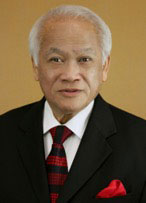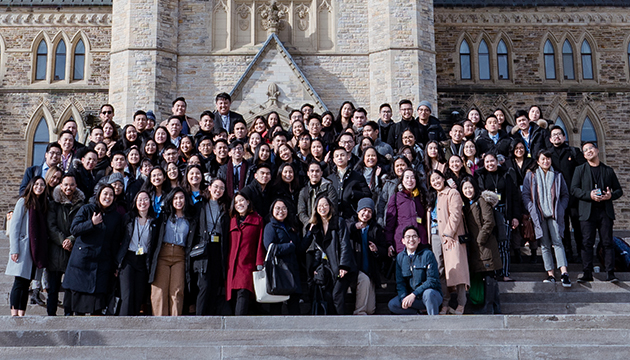(This is Part 42 of Dr. Pagtakhan’s column Medisina at Politika in Pilipino Express.)
[Editor’s Note: In February 2020, CFNet started publishing Dr. Rey Pagtakhan’s Commentary on COVID-19. Now on Part 42 of his running commentary, Dr. Pagtakhan – a retired lung specialist and former Member of Parliament – has kept the Filipino community and other CFNet readers continually informed about 1) the pandemic and its impact, 2) the scientific advances on drugs and vaccines, 3) the effectiveness of public health measures, including mass vaccination, 4) the danger of misinformation and disinformation, and 5) sound public health policy.]
More specifically, when will the acute phase of the pandemic end AND the endemic phase begin? This has become one burning question in the public minds in many countries since the onset of Omicron onslaught and the experts in the fields of epidemiology, immunology, virology and public health began to discuss the question more openly and frequently. British Columbia Chief Public Health Officer Dr. Bonnie Henry is one of the firsts, if not the first, in Canada to publicly state the end of the acute phase of the pandemic is near. "The way the virus is changing with Omicron — that is leading us to that place sooner," said Dr. Henry in an interview with CBC News (CBC News. Ben Nelms. December 30, 2021). "The type of illness it's causing, with most of us being protected through vaccination, means that we are going to get to that place."
Implied in the specific question is the tacit scientific consensus among experts – almost an expectation – that COVID-19 will be part of our lifetimes, but not with its havoc as we have experienced it to date. To explain, an endemic disease has a constant presence in the community but does not affect an alarmingly large number of people, that is, the burden of disease does not severely disrupt the health systems, economies and life of societies. What criteria or metrics WHO would need – the threshold number of member countries sufficiently tamping down their new COVID-19 cases or hospitalizations and deaths – to declare the pandemic officially over remain to be seen. A date to watch is March 12, 2022 – the second-year anniversary of the COVID-19 pandemic declaration.
Situation then and now
Two years ago this month, I wrote two articles on this site. The first was New Coronavirus Infection: Information and Guidance to alert our community that a new viral respiratory disease had emerged in China and the concern over its global spread prompted the World Health Organization (WHO) to declare it a ‘public health emergency of international concern.’ There were less than 100 cases. The second article two weeks later, COVID-19 Epidemic in China: A Global Concern, was to document the phenomenal country-spread the virus did with over 40,000 sickened and over a thousand deaths. There was no available drug nor vaccine.
Now at press time (January 24, 2022), the Johns Hopkins University Coronavirus Resource Center has posted the following grim statistics: 1) over 355 million cases and over 5.6 million deaths globally; 2) over 3.4 million cases and over 53.5 thousand deaths in the Philippines (the country of birth for most of our readers); and 3) over 2.9 million cases and over 32.7 thousand deaths in Canada. Since Omicron was first identified barely three months ago and has since displaced the Delta variant for dominance, more than 80 million cases have been reported to WHO - more than were confirmed for the whole of 2020.
At the same time, at least four brand-named drugs (for intravenous and oral administration) and vaccines are now available in Canada. The world has now fully vaccinated 52.5% of its population, with both the Philippines and Canada above this global average at 52.97% and 79.43%, respectively.
Six lessons worth remembering from the pandemic experience
- That COVID-19 can be serious not only acutely (difficulty breathing, loss of smell or taste, heart palpitations, brain fog, neurological signs of stroke, death) but also long-term (long-lasting breathing problems, fatigue or chronic kidney impairment, diabetes, extreme exhaustion, sleep disruption, or the so-called ‘long COVID’ – a condition characterized by very debilitating symptoms to the point that patients “can't do things…lie in bed all day…and can't maintain a job."
- That the COVID-19 pandemic touches every area of life: physical and mental health, economics, education, families, employment, business, technology, trade, travel, tourism, politics, and national security;
- That COVID-19 is both a national and international issue;
- That there remain serious concerns how COVID-19 infections will impact people in the future and the health-care system since there are still many unknowns and the time that has passed since it began circulating among humans is still little;
- That health is central not only to the life of citizens but also to their nations; and
- That genuine health care means keeping people healthy and preventing the need for care.
Realities the world may not accept
The WHO at the 150th session of its Executive Board on 24 January 2022 outlined the following realities the world cannot accept, namely:
- the almost 50 thousand deaths a week from preventable and treatable disease;
- an unacceptable burden on our health systems (and) exhausted health workers;
- the consequences of long COVID;
- the virus whose evolution we cannot control nor predict;
- the heavy toll on mental health – children and adults - and the gaps in services; and
- that Omicron will for sure be the last variant, or that we are in the endgame now.
It underscored the point: “Vaccines alone are not the golden ticket out of the pandemic. But there is no path out unless we achieve our shared target of vaccinating 70% of the population of every country by the middle of 2022.” It has shared the optimism that “we can end COVID-19 as a global health emergency, and we can do it this year.”
Pandemic’s last act
Barely three months since its onslaught last November, Canada and the world have seen Omicron become the dominant strain across much of the world. Waves after waves have made many to liken it to a disease tsunami overwhelming the health care system, facilities and healthcare workers alike. Reporter Rob Picheta’s coverage of this issue, “Omicron has changed the shape of the pandemic. Will it end it for good? speaks to its currency on a global scale. (CNN News. January 22, 2022). Hence, I have paraphrased and quoted from his news report.
In support of a change to endemic state, I have paraphrased or listed the following quotes from Picheta’s varied expert-contacts in Europe, the U.S., and in Canada:
- The 'fear factor of Covid' is lower;
- II's becoming endemic and it will continue to stay endemic for some time -- as has happened with other coronaviruses;
- All viruses try to become endemic, and this one looks like it's succeeding;
- Most people will be infected as children, possibly multiple times, and as those infections accumulate, they build up immunity;
- Omicron's reduced severity is key -- it adds an extra layer of immunity, but doesn't come with the same risk of hospitalization that Covid-19 held for most of last year;
- Well over half the world has now got some exposure to the virus or the vaccine;
- History has shown other coronaviruses have become endemic – a natural history:
a. 'Russian flu' in the late 19th century outbreak that is estimated to have killed around a million people ultimately became the common cold; and
b. The 'Spanish Flu' basically gave the whole world a very nasty dose of an H1N1 influenza virus" in 1918 and now we get a wave of that virus pretty much every year.
Caveat and great hope: Although experts have generally agreed that Omicron has moved the pandemic closer to the endemic phase, it depends on the next variant. Dr. Anthony Fauci, director of the National Institute of Allergy and Infectious Diseases, attributed his reservation to the great variability with new emerging variants. "I would hope that that's the case," that we have moved closer to the endemic phase.
As we move closer to the 2nd-year anniversary of the pandemic come next month and the race towards an endemic phase accelerates, many experts still advise public health restrictions at least while the Omicron surge continues. Let vaccination drive continue. While Omicron’s ultra-contagiousness has put a swift decline to Delta’s lethality, we have yet to reach that steady state with the virus. While we know it would not be the acute phase of the pandemic forever, until then let us keep one’s fingers crossed














